| Home Travel Index | First Posted: Dec 27, 2013 Jan 21, 2020 | |
Kafr Bir'im, Kafar Bir'em and Kfar Bar'am
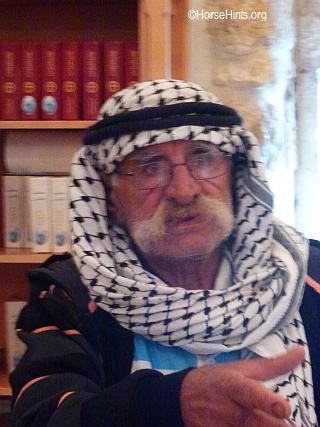 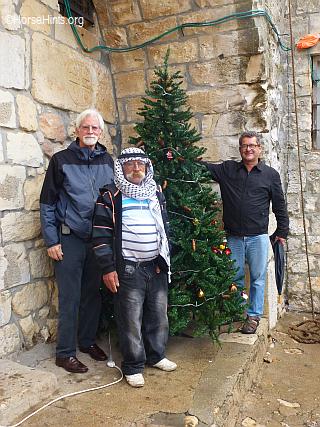 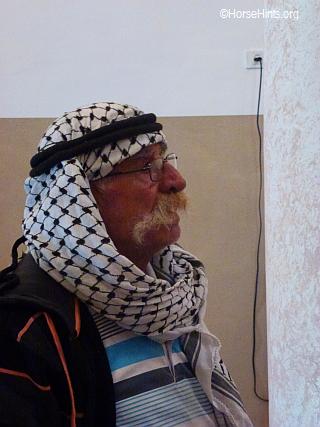
 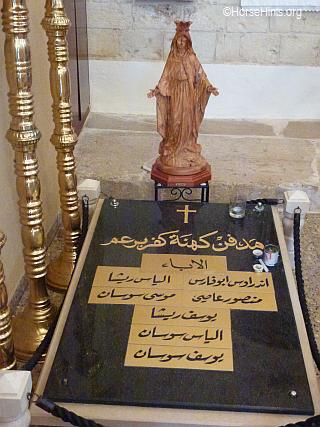  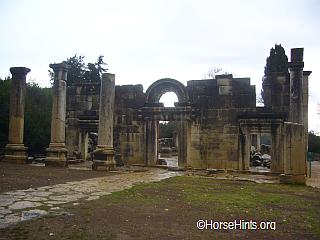 Old Synagogue/ruins at Kafar Bir'em This was another "sparkle" from our guide, Graeme Stone. My husband, Bill, and I were fortunate enough to have Graeme as our guide for our custom-private trip to Israel. The trip was a wow and so was Graeme! The story of Kafar Bir'im is a difficult one. Kafr Bir'im, also Kefr Berem was an Palestinian Arab village in Mandatory Palestine, located in modern-day northern Israel, 4 kilometers (2.5 mi) south of the Lebanese border and 11.5 kilometers (7.1 mi) northwest of Safed. The village was situated 750 meters (2,460 ft) above sea level, with a church overlooking it at an elevation of 752 meters (2,467 ft). The church was built on the ruins of an older church destroyed in the earthquake of 1837. In 1945, 710 people lived in Kafr Bir'im, all of them Christians. By 1992, the only standing structure was the church and belltower. Kafr Bir'im is built on the site of the ancient Jewish village of Kfar Bar'am, from which the name is derived. The remains of the a 3rd-century Synagogue of Kfar Bar'am are still visible. Middle Ages A visitor in the thirteenth century described an Arab village containing the remains of two ancient synagogues. Ottoman period In 1596, Kafr Bir'im appeared in Ottoman tax registers as being in the Nahiya of Jira of the Liwa of Safad. It had a population of 114 Muslim households and 22 bachelors. Kafr Bir'im was badly damaged in the Galilee earthquake of 1837. The local church and a row of columns from the ancient synagogue collapsed. For many centuries, the town was a place of Jewish pilgrimage. It was said in the 12th century to contain the tombs of Barak, the prophet Obadiah and Queen Esther. The Jews of Safed would assemble around these shrines each year on Purim to "eat, drink and rejoice." A few people were reported to still visit the spot in 1868. In the 19th century the village had a population of 160 males, all Maronites and Melkites. During the 1860 civil war in Lebanon, Muslims and Druzes attacked the Christian village. In the late nineteenth century the village was described as being built of a stone, surrounded by gardens, olive trees and vineyards, with a population of between 300 and 500. British rule In 1945, Kafr Bir'im had a population of 710, consisting of 10 Muslims and 700 Christians. The village population in 1948 was estimated as 1,050 inhabitants. Israeli rule Kafr Bir'im was captured by the Haganah on October 31, 1948 during Operation Hiram. In November 1948 most of the inhabitants were expelled until the military operation was complete, and none were subsequently permitted to return. Today the villagers and their descendants number about 2,000 people in Israel. In addition, there are villagers and descendants in Lebanon and in western countries. In 1949, with cross-border infiltration a frequent occurrence, Israel did not allow the villagers to return to Bir'im on the grounds that Jewish settlement at the place would deter infiltration. Kibbutz Bar'am was established by demobilized soldiers on the lands of the village. In 1953, the residents of former Kafr Bir'im appealed to the Supreme Court of Israel to return to their village. The court ruled that the authorities must answer to why they were not allowed to return. On September 16, 1953 the village was razed and 1,170 hectares of land were expropriated by the state. The leader of Melkite Greek Catholics in Israel, Archbishop Georgios Hakim, alerted the Vatican and other church authorities, and the Israeli government offered the villagers compensation. Archbishop Hakim accepted compensation for the land belonging to the village church. In the summer of 1972, the villagers of Kafr Bir'im and Iqrit went back to repair their churches and refused to leave. Their action was supported by archbishop Hakim's successor, Archbishop Joseph Raya. The police removed them by force. The government barred the return of the villagers so as not to create a precedent. In August 1972, a large group of Israeli Jews went to Kafr Bir'im and Iqrit to show solidarity with the villagers. Several thousand turned out for a demonstration in Jerusalem. The Israeli authorities said most of the inhabitants of the village had received compensation for their losses, but the villagers claimed they had only been compensated for small portions of their holdings. In 1972, the government rescinded all "closed regions" laws in the country, but then reinstated these laws for the two villages Kafr Bir'im and Iqrit. This was met with criticism by the opposition parties. In the 1977 election campaign Menachem Begin, then leader of the right-wing Likud party, promised the villagers that they could return home if he was elected. This promise became a great embarrassment to him after he had won, and a decision on the issue was postponed as long as possible. It was left to his agriculture minister to reveal to the public that a special cabinet committee had decided that the villagers of Kafr Bir'im and Iqrit would not be allowed to return. On March 24, 2000, Pope John Paul II appealed to Prime Minister of Israel Ehud Barak to do justice for the uprooted of Kafr Bir'im. |